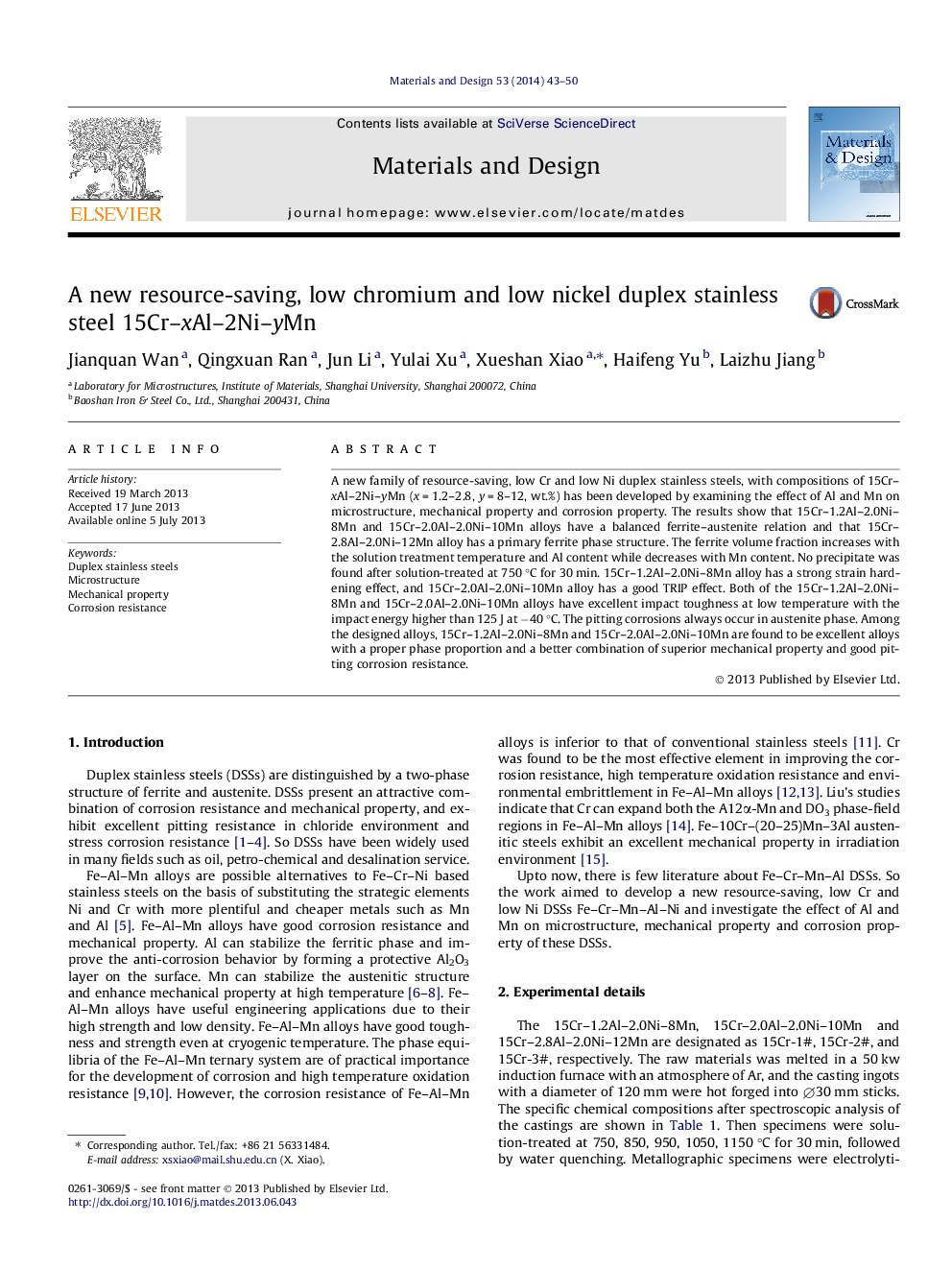| Article ID | Journal | Published Year | Pages | File Type |
|---|---|---|---|---|
| 829710 | Materials & Design (1980-2015) | 2014 | 8 Pages |
•15Cr–1.2Al–2.0Ni–8MnDSS has a strong strain hardening effect in tensile test.•15Cr–2.0Al–2.0Ni–10Mn DSS presents a good TRIP effect.•Both of them have excellent impact toughness at low temperature.•The pitting corrosions always occur in austenite phase.
A new family of resource-saving, low Cr and low Ni duplex stainless steels, with compositions of 15Cr–xAl–2Ni–yMn (x = 1.2–2.8, y = 8–12, wt.%) has been developed by examining the effect of Al and Mn on microstructure, mechanical property and corrosion property. The results show that 15Cr–1.2Al–2.0Ni–8Mn and 15Cr–2.0Al–2.0Ni–10Mn alloys have a balanced ferrite–austenite relation and that 15Cr–2.8Al–2.0Ni–12Mn alloy has a primary ferrite phase structure. The ferrite volume fraction increases with the solution treatment temperature and Al content while decreases with Mn content. No precipitate was found after solution-treated at 750 °C for 30 min. 15Cr–1.2Al–2.0Ni–8Mn alloy has a strong strain hardening effect, and 15Cr–2.0Al–2.0Ni–10Mn alloy has a good TRIP effect. Both of the 15Cr–1.2Al–2.0Ni–8Mn and 15Cr–2.0Al–2.0Ni–10Mn alloys have excellent impact toughness at low temperature with the impact energy higher than 125 J at −40 °C. The pitting corrosions always occur in austenite phase. Among the designed alloys, 15Cr–1.2Al–2.0Ni–8Mn and 15Cr–2.0Al–2.0Ni–10Mn are found to be excellent alloys with a proper phase proportion and a better combination of superior mechanical property and good pitting corrosion resistance.
